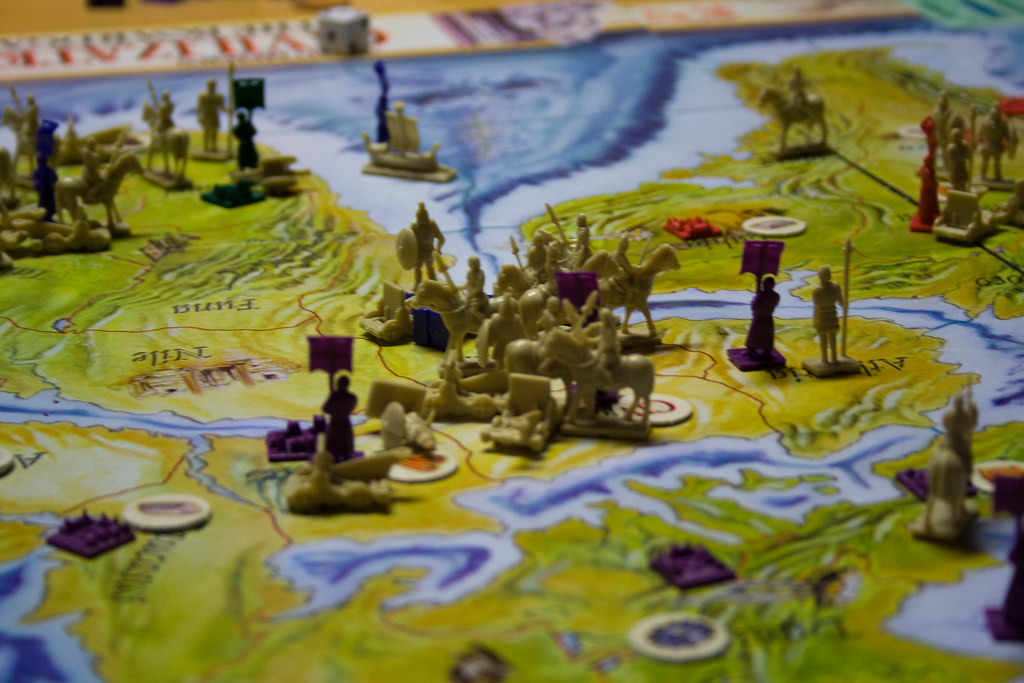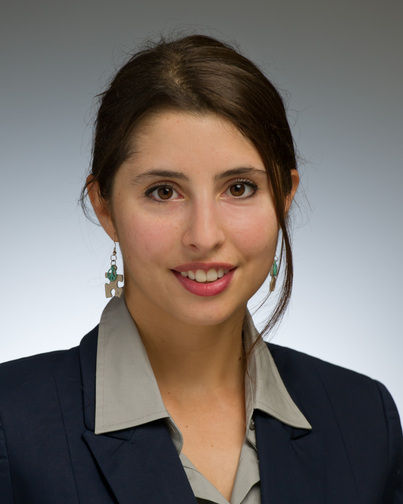
“Teddy, how can one obtain a fair maiden?” asks a white supremacist playfully to a toy teddy bear in a YouTube video. He then reports the teddy bear’s answer to his viewers: “in order to truly understand the nature of women, one must first retake Constantinople from the Ottoman Empire.” The connection between the sexism expressed in “obtaining” a “fair maiden” and the vanquishing of a “civilizational” enemy is a recurrent theme in contemporary white supremacy that flourishes online. This quest for civilizational/racial purity combines an interest in white women’s reproductive and sexual availability with concerns about demographic “replacement.” Consider one of Republican Rep. Steve King’s many controversial tweets: “We can’t restore our civilization with somebody else’s babies.” Consider the anger the Tree of Life synagogue terrorist felt towards the Jewish congregation, not simply because they were Jews, but also because they were progressive Jews, helping refugees to safety in the United States. Consider the title of the Christchurch terrorist’s manifesto: “The Great Replacement.” In the contemporary United States, such statements, openly identified as extremist, operate alongside state-sanctioned racial policies with similar demographic targets, including attacks on women’s reproductive rights, endless wars on terror, the racialized criminal justice system, and immigration policing, all of which are all taken to be politics as usual.[1]
Building on the presentations and discussions that took place during the April 16 flash panel organized by Atalia Omer, “Interrogating the Christchurch Shootings,” this blog post connects the gendered/sexualized nature of white supremacist theorizing to its mobilization of civilizational discourses. I argue that at this intersection of civilization talk and obsession with reproductive purity, one finds a toxic passion for an imagined Medieval past and an obsession with the Ottoman Empire/Turkey that echoes the “Clash of Civilizations” rhetoric promoted by earlier civilizational theorists such as political scientist Samuel Huntington. This conjunction raises important questions about how respectable forms of scholarship and white supremacist ideologies may bolster each other. In fact, this discursive continuum parallels the continuum operating between racist state policies and “lonewolf” racist violence considered beyond the pale of the law and requires inquiry alongside it.
The Will to Clash of Civilizations
In one of the (generally positive) reader responses to my book manuscript, an anonymous reader noted I had made rather too much of an outdated concept that had already been criticized to bits:
“I do think discussing Huntington is fine (though it is a bit well-worn), though I was surprised when I came across phrases such as ‘the current popularity of Huntington’s thesis,’ which felt a bit dated.”
The reader was referencing my conclusion, where I emphasized how Turkey’s history of transculturation and prevailing debates about “westernization” in the country defied Huntington’s “Clash of Civilizations” thesis, which claimed that the world consisted of “seven or eight major civilizations” whose culture-driven conflicts could be traced throughout history and would determine post-Cold War era politics. Huntington’s broad “cultural” categories mimicked prevailing ideas of race and, where they differed, were reducible to religion. In revising for publication, I changed the conclusion to acknowledge that academia had both thrown the book at, and closed the book on, Huntington. I noted that almost immediately after his thesis appeared, experts rallied to demonstrate how Huntington had underplayed “intracivilizational” conflicts as well as cultural hybridity, and had done so at a time considered the high age of globalization. Countering Huntington’s thesis with data was indeed low-hanging fruit for anyone who had studied any “civilization” in any depth. Moreover, scholars such as Mahmood Mamdani had come to question whether “culture” could ever be an explanatory factor for political conflicts. In revising, I acknowledged the strength of these critiques, but hinted that the scholarly reports of the death of “Clash of Civilizations” may have been premature:
“The sharp divide between the West and the rest distorts reality, but rhetorical attempts to locate such a divide are real enough. Culture Talk influences politics.”[2]
The afterlives of Clash of Civilizations have indeed been robust, with extremism, the security state, the military industrial complex, and knowledge-production boosting each other at a dizzying rate. Polemics around the civilizational status of Turkey vis-à-vis Europe have transitioned well into the new century, flourishing in peer-reviewed scholarship as well as in white-supremacist YouTube comments.
Istanbul, not Constantinople?
Turkey appears as a recurrent headache in Huntington’s work. In his 1993 Foreign Affairs article, Huntington called Turkey of the 1990s—a laicist, Muslim-majority NATO ally and a candidate for European Union membership—“the most obvious and prototypical torn country,” which could not decide whether it belonged within “Islamic” or “Western” civilization. Despite claims to objectivity and descriptiveness, his 1996 book turned prescriptive when it suggested that Turkish leaders might soon be ready to stop their “frustrating and humiliating” attempts to join “Western civilization.” Instead of acting like “beggars,” he predicted, the country would do well to “resume its much more impressive and elevated historical role as the principal Islamic interlocutor and antagonist of the West” (178). This piece of unsolicited advice did make Huntington some strong “civilizational” enemies in Turkey, although perhaps not of the kind that he had imagined. Instead, Huntington’s words got incorporated into Kemalist and leftist conspiracy theories, which claimed that the United States was overseeing a plot to “Islamicize” Turkey through the leadership of the “moderate” Islamist Recep Tayyip Erdoğan and his Justice and Development Party (AKP) in order to weaken the country.[3]
And voila, Turkey was Islamicized and became more antagonistic towards the West, right? Although the current AKP regime might have pleased Huntington in many ways with its “neo-Ottomanist” policies, it does not fulfill his thesis either. After all, it was under AKP’s early rule that major human rights packages were passed in order to make Turkish law comply with the Copenhagen criteria for membership in the European Union. Similarly, the regime takes as many pages out of the Western playbook—referencing the U.S. presidential system to justify the latest turn to an executive presidency, for example—as it does from age-old Ottoman legends. Moreover, the vision of the Ottoman Empire as somehow the antithesis of Western civilization itself would be contested by any serious historian who has passing familiarity with the cultural exchange and military alliances forged between European countries and the final Muslim Caliphate.
Yet, in Huntington’s suggestion that Turkey give up its “westernization” policies lies a reality more powerful than all our footnotes and primary documents can suppress: over the course of the twentieth century, “Western civilization” has become both a substitute and an alibi for “whiteness” and “Christianity” and Turkey constitutes a problem for all of these categories.

“UNTIL THE HAGIA SOPHIA IS FREE OF THE MINARETS, THE MEN OF EUROPE ARE MEN IN NAME ONLY,” wrote the Christchurch terrorist in all caps in his manifesto, referencing a Byzantine cathedral that had been converted to a mosque under the Ottoman Empire and is now a museum. The phallus, the cross, and the sword: A mythic civilizational formula based on an an intersection of racism, sexism, and Islamophobia and, like the vision of a pure white Europe of the past, exists more in the minds of white supremacists than in historical reality.
In fact, the terrorist’s manifesto contains an entire section titled “To Turks.” Here the terrorist orders all Turks currently living in Istanbul (my city of birth and where my close relatives live) to retreat to the Asian side of the city, or face violence: “FLEE TO YOUR OWN LANDS, WHILE YOU STILL HAVE THE CHANCE.” He calls Erdoğan “the leader of one of the oldest enemies of our people, and the leader of the largest Islamic group within Europe,” in language recalling Huntington’s insult/praise for the Ottoman Empire as “the principal Islamic interlocutor and antagonist of the West.” References to Turks (and to massacred Bosniaks, whom he considered Turks) also decorated his assault weapon.
Why would an Australian terrorist living in New Zealand, a world away, be so obsessed with enforcing the boundaries between “Europe” and the Republic of Turkey? Because in our contemporary era, “Western civilization” operates as a code for whiteness and Christianity articulated in geographic and world-historic terms. As Alastair Bonnett notes in The Idea of the West, the concept of Western civilization has particular purchase in white supremacist theories about racial replacement because, in pointing to great achievements, it offers a fig leaf of loftiness to the insipid category of whiteness.[4] Thus, a simplified history of Ottoman clashes with nations mythologized as European ex post facto, with symbolic focus on Vienna and Istanbul, has gained new charge. In this construction, Turkey’s ambivalent status vis-à-vis the geographic subcontinent of Europe appears as an irritant.
In contemporary white supremacist theorizing, what does not belong in “Europe” must be excised at the altar of this construction that was never pure but must somehow be made pure. What Huntington once called “the bloody borders of Islam” turn out to be non-existent borders to be drawn in Muslims’ blood.
This is not to defend the now-excised phrase about “the current popularity of Huntington’s thesis” in that earlier draft of my book. The reader was right at the time. However, the so-called “Trump era” has clarified more than ever just how popular (in all senses of the term) calls to man the barricades of Western civilization have become in the present. In the age of social media, Huntington’s argument, itself a rehashing of older civilization talk, has found its viral legs and assault weapons.
Why did the solid scholarship that closed the book on Huntington’s thesis not work for so many? Is it because globalization turned out not to be the panacea it was promised to be? Or because our white supremacist political and socioeconomic structures necessitate the continuous redesigning and dissemination of white supremacist discourse? If historical and geographic reality are not enough to crush the Clash of Civilizations thesis, what is?
New Zealand has banned the circulation of the Christchurch terrorist’s manifesto, and Erdoğan has rightly been criticized for showing video footage of the massacre at campaign events to whip his supporters into a nationalist fervor. Yet censorship is not a safe option either. These texts travel, and so do their proponents. The Christchurch terrorist himself traveled around Europe and visited Istanbul several times. Whereas I see a complex racial and civilizational merging that can never be reversed in my city of birth, he saw a mistake to be turned into a battle cry. How do we deal with the convergence between Huntington’s subtle advice to Turkey and this terrorist’s threat “to Turks”?
Make Istanbul White Again

I end with a couple of memes and on a note of irony, as befits our terrifying hyperreal era: the racial/civilizational language that animated the Christchurch terrorist flourishes among Turks as well. In the lead-up to the recent municipal elections that led to AKP losing its hold over Istanbul for the first time in the party’s history, supporters of the opposition party CHP began circulating memes that praised the new mayor of Istanbul, Ekrem Imamoğlu, and his family for the way they look.
One meme contrasted a daytime image of Imamoğlu and his slim, youthful, blonde wife with a nighttime photo of the stout, mustachioed AKP candidate and his headscarf-wearing wife. “The candidates for Istanbul mayor and their partners,” it read, “On the one side, light; on the other side, darkness” (Figure 1). The light/dark metaphors did multiple duty here much in the same way they do in Western politics, referring to the timing of the two photos, mobilizing connections to modernity and backwardness, and dogwhistling colorism.

A post-election meme celebrating Imamoğlu’s victory depicted his fair-skinned and light-haired family wearing “modern” clothing and exclaimed, “Bro, look at the family! In one instance, we progressed 100 years. We became like Finland, Sweden and Norway!” (Figure 2).
Expressing a half-earnest yearning to be finally become “like Finland, Sweden, and Norway,” such texts of digital folklore demonstrate that Turks themselves will not be left behind when it comes pushing back against Turkey’s well-earned racial and civilizational ambiguity.[5] However, while Western white supremacists insist Turks can never belong within whiteness and must be pushed out of Europe, Turkish white-supremacists see uncontested whiteness as within grasp, pending the election of political representatives with the right/white look. In both cases, women’s bodies are made to bear the burden of racial/civilizational proof.
[1] Scholarship investigating this continuum with regards to the War on Terror includes Leti Volpp, “The Citizen and the Terrorist,” UCLA Law Review 49, no. 5 (2002): 1575-600, Michael Welch, Scapegoats of September 11th : Hate Crimes and State Crimes in the War on Terror (New Brunswick, N.J.: Rutgers University Press, 2006), and Inderpal Grewal, Saving the Security State : Exceptional Citizens in Twenty-first-century America (Durham, N.C.: Duke University Press, 2017).
[2] Gürel, The Limits of Westernization, 188. See Chiara Bottici and Benoît Challand, The Myth of the Clash of Civilizations (Florence, Ky.: Routledge, 2013).
[3] Gürel, The Limits of Westernization, 136. See also Emre Kongar, ABD’nin Siyasal Islam’la Dansı (Istanbul: Remzi, 2012), 28-34.
[4] Alastair Bonnett, The Idea of the West: Culture, Politics and History (New York: Palgrave Macmillan, 2004), 26-8.
[5] For an excellent historical discussion of the Turkish will to whiteness, see “Is the Turk a White Man?”: Race and Modernity in the Making of Turkish Identity by Murat Ergin (Brill, 2016)

